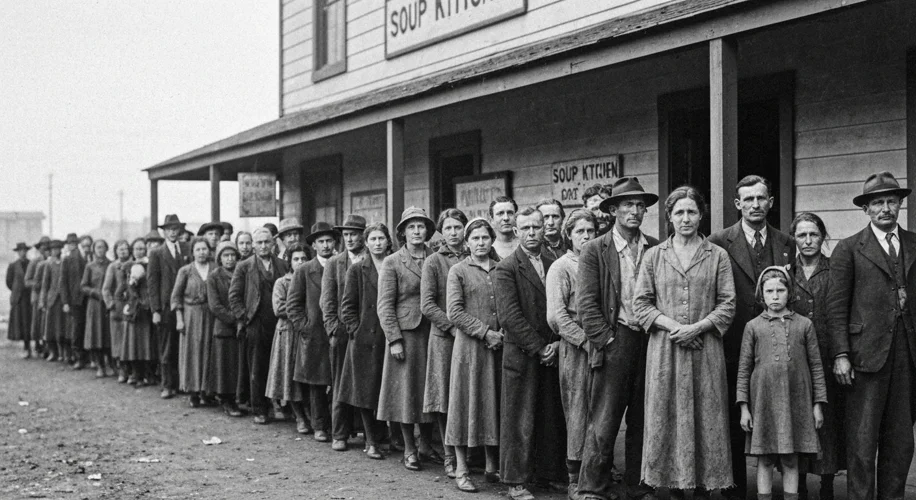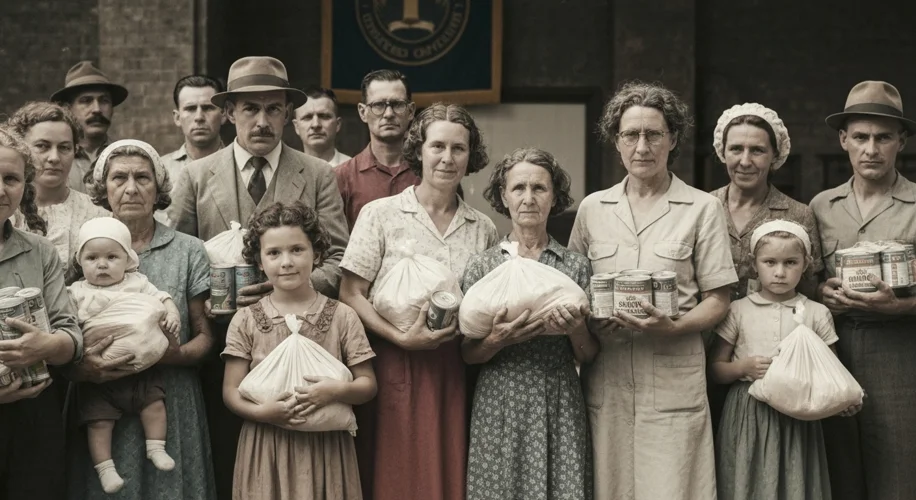The year is 1932. The air in America is thick with despair. Dust storms rage across the plains, economic devastation has swept through cities, and breadlines have become a grim, ubiquitous symbol of a nation brought to its knees. In this landscape of widespread hunger and crushing poverty, the very concept of government intervention in feeding its citizens was a radical idea. Yet, it was during this darkest hour, the Great Depression, that the seeds of federal food aid programs were sown, offering a lifeline to millions and forever altering the relationship between the American people and their government.
The Great Depression wasn’t just an economic downturn; it was a profound societal shockwave. The roaring twenties had lulled many into a false sense of security, a belief in endless prosperity. But beneath the surface, cracks were appearing. When the stock market crashed in 1929, it wasn’t just financial portfolios that evaporated; it was jobs, savings, and hope. Farmers, already struggling with falling prices and the harsh realities of the Dust Bowl, watched their livelihoods turn to dust. In urban centers, factories shuttered, leaving entire communities without work. Families, once proud and self-sufficient, found themselves facing the agonizing choice between food and rent, between medicine and heat.

Initially, the response to this burgeoning crisis was piecemeal and largely left to private charities and local governments. Churches, community organizations, and wealthy philanthropists did their best, but the sheer scale of the suffering was overwhelming. The federal government, under President Herbert Hoover, initially hesitated, subscribing to a philosophy that favored limited government intervention and relied on volunteerism. This approach, however, proved woefully inadequate.
The turning point came with the election of Franklin Delano Roosevelt in 1932. Promising a “New Deal” for the American people, Roosevelt’s administration recognized that the federal government had a crucial role to play in not only economic recovery but also in directly addressing the immediate human crisis of hunger. The early New Deal programs, while diverse, began to grapple with the issue of food scarcity.
One of the earliest and most significant federal efforts was the Federal Surplus Relief Corporation (FSRC), established in 1933. Its ingenious, albeit initially small-scale, mission was to purchase surplus agricultural commodities – food that farmers couldn’t sell because of market gluts – and distribute it to those in need. This dual-pronged approach aimed to help struggling farmers by creating demand for their produce and, crucially, to alleviate hunger among the unemployed and impoverished.
Imagine a farmer in Oklahoma, his fields barren from drought, his livestock dwindling. He receives a government check, not for crops he can’t grow, but for the surplus wheat he managed to harvest before the worst hit. This wheat, along with other staples like flour, rice, and later, canned goods, would then travel to distribution centers. Here, families, their faces etched with worry, would line up to receive their ration – a tangible symbol that their government had not forgotten them.
As the New Deal evolved, so did the food aid programs. The FSRC laid the groundwork for more structured and expansive initiatives. The most impactful of these was the creation of the Food Stamp Plan in 1939. This program, a precursor to today’s SNAP (Supplemental Nutrition Assistance Program), was revolutionary. It operated on a voucher system: families purchased food stamps at a reduced price, which could then be used to buy specific food items at regular grocery stores. This not only ensured that people received nutritious food but also helped support regular retailers, further integrating the aid into the broader economy.
The impact of these programs was profound, extending far beyond mere sustenance. For families on the brink, a government-issued food stamp or a sack of surplus flour meant the difference between gnawing hunger and a shared meal. It meant children could go to school with something in their stomachs, and parents could face the day with a sliver of renewed hope. These programs were a concrete manifestation of the New Deal’s promise to care for its citizens during times of crisis.
However, the implementation wasn’t without its challenges. Bureaucracy, logistical hurdles, and sometimes, prejudice, could impede the efficient distribution of aid. There were debates about the types of food distributed, the eligibility of recipients, and the long-term sustainability of such programs. Yet, the overarching narrative was one of resilience and adaptation. The government, through these initiatives, demonstrated a capacity to respond to the needs of its people on an unprecedented scale.
The legacy of these Great Depression-era food aid programs is undeniable. They established a precedent for federal responsibility in ensuring basic nutritional security. They recognized hunger not as an individual failing, but as a societal problem that demanded a collective, governmental solution. While the specific forms of aid have evolved, the fundamental principle – that a nation has a duty to feed its hungry citizens – was firmly cemented during those trying years. These programs were more than just food; they were a symbol of hope, a testament to human resilience, and a cornerstone of the modern American social safety net.
As we reflect on the Great Depression, the images of breadlines and soup kitchens are indelible. But woven into that narrative of hardship is also the story of innovation and compassion, of a government reaching out to its people with a simple, yet life-affirming, gesture: a bowl full of hope.

